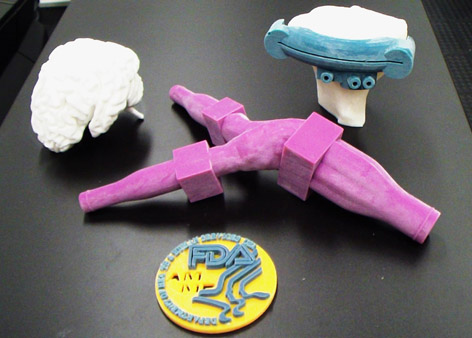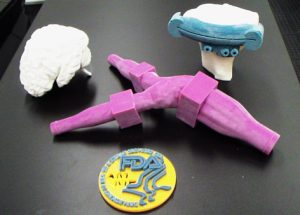FDA Plans More Research on 3D Printing

Latest News
January 9, 2017
The use of 3D printing is quickly revolutionizing healthcare. Additive manufacturing (combined with high-resolution scanning) has allowed hospitals to print detailed models of organs and bone structures to help surgeons prepare for complex procedures, as well as create custom-fit prosthetics and implants. Researchers have developed ways to 3D print medicine, as well as human tissue.
Advancement has been so rapid that regulations have not kept pace. The U.S. Food and Drug Administration (FDA) has released a new video that outlines the agency’s plans to better understand 3D printing and issue more guidance to healthcare providers and device manufacturers on its use in medical applications.
The video, “The 3Rs of 3D Printing: FDA’s Role”, indicates the agency is working to better understand the technology in order to ensure patient safety.
The FDA approved the first 3D-printed drug in 2016 (the epilepsy drug Spritam from Aprecia) and has also cleared several dozen 3D-printed medical devices. The video includes information on a 3D-printed device that helped save a 3-month-old boy in Michigan, as well as a man who had 75% of his skull replaced with a printed implant.
In May, the agency released draft guidance on 3D printed devices, including early ideas on how to characterize and validate such devices. That initial document does not address printing solutions for biologics, cells or human tissues. The agency also indicated that point-of-care device manufacturing would raise “additional technical considerations” not covered in the guidance.
In general, safety and quality standards will be the same for printed devices as they would be for devices produced through other methods. For custom-made devices that are created for a specific patient, FDA indicated manufacturers should specify a range of dimensions for a device that could include all possible sizes that might be produced.
The agency will work with manufacturers, universities and other agencies to understand how additive manufacturing processes and materials might affect quality and testing of these devices.
You can view the FDA video below.
You can read more of our healthcare-related coverage here.
Source: RAPS
Subscribe to our FREE magazine, FREE email newsletters or both!
Latest News
About the Author
Brian Albright is the editorial director of Digital Engineering. Contact him at [email protected].
Follow DERelated Topics






